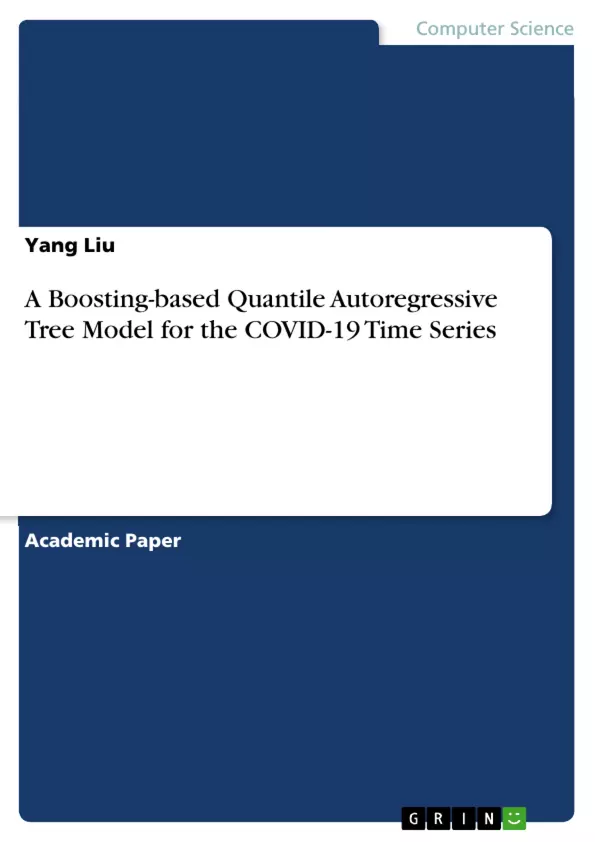Analysis and modelling of the daily observations is of the interest for both academic and practical needs during the worst public health crisis in decades. In this paper we propose a Boosting-based Quantile Autoregressive Tree (BQART) model to estimate the evolution in reported cases and fatality of the COVID-19 pandemic. The proposed approach benefit from the boosting methodology and the additive quantile regression to overcome challenges of unknown probabilistic distribution in the autoregressive variable and location shift in the observed data. The simple additive structure and binary autoregressive tree representation further improve the interpretability of the model and help to clearly illustrate the results.
The estimated results for the USA and Singapore were discussed in details with more results for other countries in the appendix. While the shape and structure of estimated trees represent the autoregressive properties observed in the data, the model output helps to demonstrate improved accuracy in time series forecasting and analysis. These results should encourage the use of machine learning based tree ensembles in time-series modelling where model performance and interpretability is sought.
Inhaltsverzeichnis (Table of Contents)
- Overview
- Methodology Overview
- Estimated results
- Conclusion and Discussion
- Appendix
- Rate of change in Total Cases (rc) results for Brazil, Russia, India and UK
- Rate of change in Fatality Rate (rf) results for Brazil, Russia, India and UK
Zielsetzung und Themenschwerpunkte (Objectives and Key Themes)
This paper presents a Boosting-based Quantile Autoregressive Tree (BQART) model for estimating the evolution of COVID-19 cases and fatalities. The model aims to overcome challenges associated with unknown probabilistic distributions in autoregressive variables and location shifts in observed data.
- Boosting methodology for time series analysis
- Quantile autoregression for handling unknown distributions
- Interpretability of the model and its representation
- Application of BQART to COVID-19 data
- Comparison of model accuracy in time series forecasting
Zusammenfassung der Kapitel (Chapter Summaries)
- Overview: This chapter introduces the methodology used to estimate the trend of epidemic evolution by analyzing the rate of change in total confirmed cases and the fatality rate. It also describes the data sources, target variables, and time series properties of the data.
- Methodology Overview: This chapter details the proposed BQART approach, which utilizes quantile autoregression and boosting methods to address challenges in time series modeling for ongoing pandemics. It explains the rationale behind the QAR model and its application to COVID-19 data.
- Estimated results: This chapter presents the estimated results for the USA and Singapore, focusing on the shape and structure of the estimated trees and their implications for time series forecasting.
Schlüsselwörter (Keywords)
The paper focuses on Ensemble Learning, Boosting, Quantile Autoregression, Quantile Autoregressive Tree, Time Series Analysis, and COVID-19.
- Quote paper
- Yang Liu (Author), 2020, A Boosting-based Quantile Autoregressive Tree Model for the COVID-19 Time Series, Munich, GRIN Verlag, https://www.grin.com/document/923166



